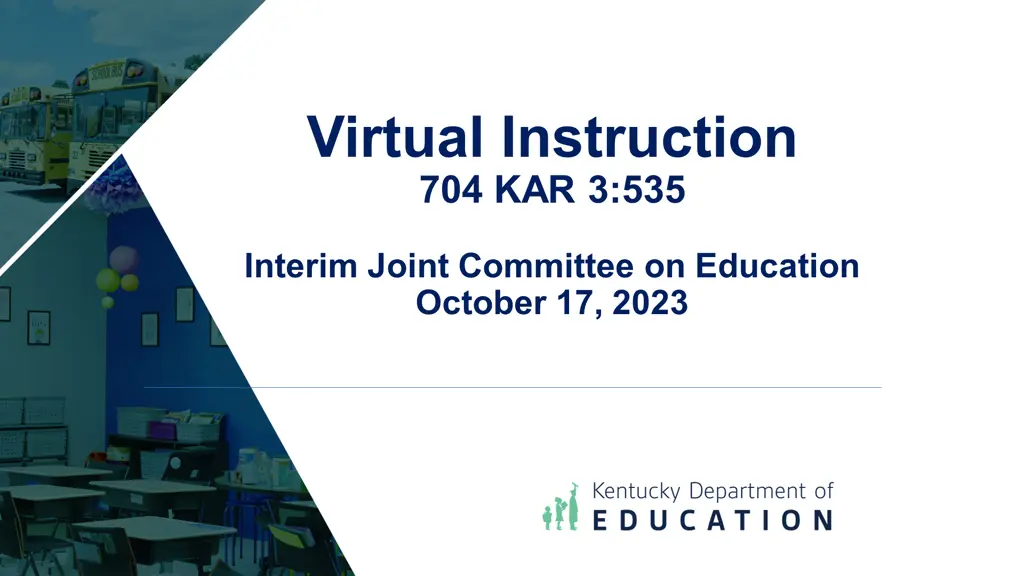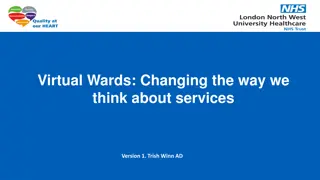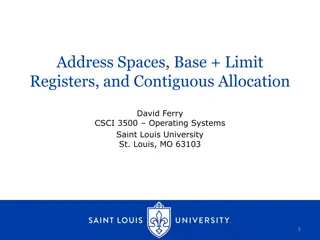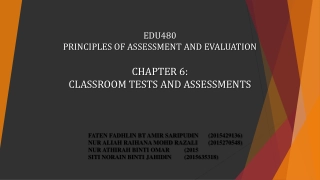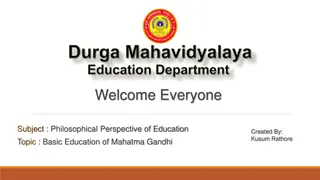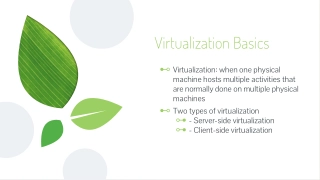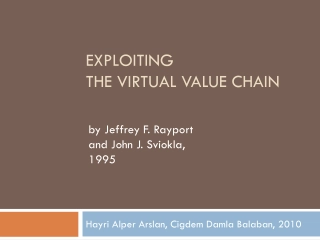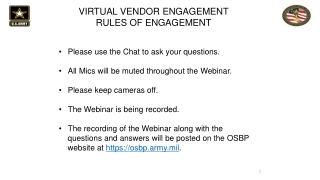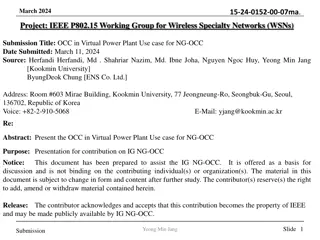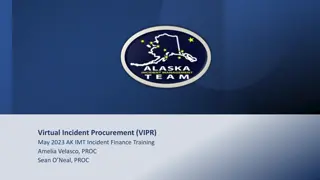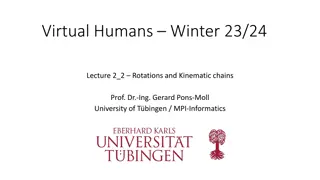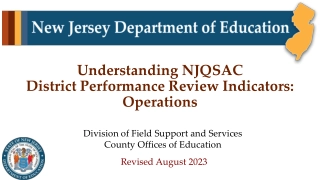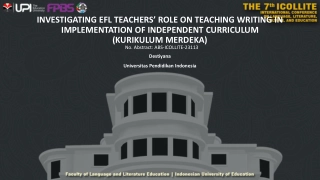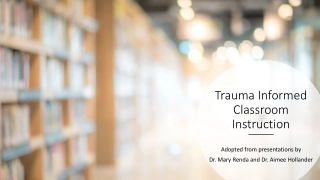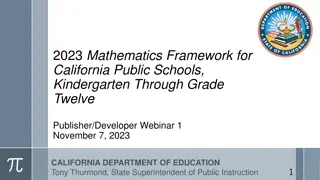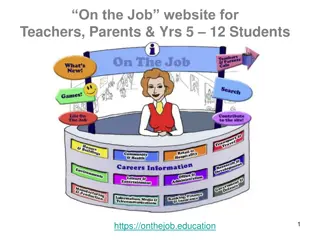Virtual Instruction
The evolution of Kentucky's virtual instruction program, from its early beginnings to the current program structures and enrollment options. Discover how districts have adapted to support online and virtual learning, and the potential for multi-district programs in the future.
Download Presentation
Please find below an Image/Link to download the presentation.
The content on the website is provided AS IS for your information and personal use only. It may not be sold, licensed, or shared on other websites without obtaining consent from the author. Download presentation by click this link. If you encounter any issues during the download, it is possible that the publisher has removed the file from their server.
- virtual instruction
- Kentucky
- online learning
- remote learning
- program structures
- enrollment options
- district coordination
- multi-district programs
Presentation Transcript
Virtual Instruction 704 KAR 3:535 Interim Joint Committee on Education October 17, 2023
Introduction Kentucky has recognized full-time enrollment in online, virtual, and remote programs for the greater part of two decades. Virtual and performance-based courses authorized by 704 KAR 3:305 Section (4) (3) in grades 5-12. Virtual option necessarily expanded during the COVID-19 Pandemic via a KBE waiver adopted to provide an attendance-based option for all grades. Continuing desire by districts to offer virtual programs to provide additional options for a small percentage of students and families. Promulgation of 704 KAR 3:535
Supporting Online, Virtual and Remote Learning 2012 KVHS Closes. KDE transitions from a delivery model to supporting school districts in local development next 2000 Kentucky pioneered a state- wide online and virtual high school option for students beginning in the fall of 2000 called the Kentucky Virtual High School (KVHS) 2021-22 Districts offering full-time enrollment options grew from 4 to approximately 115 Major digital readiness/ digital learning growth during this time. } 2000-2012 approximately 700 students per year take KVHS courses (est. 98% part-time, supplemental course pickups) 2013-Today 158 districts report offering supplemental online, virtual courses (learner acceleration, learner at-risk/fallen behind, expanded course offerings, globetrotters) and 45 districts have expanded enrollment opportunities
Current Program Structures of Full-time Enrolled Online/Virtual Learning Part-time (supplemental) enrolled vs. Full-time enrolled Pupil Attendance ( seat time attendance ) vs. Virtual Performance-Based Based upon current structures, districts can implement their online/virtual program in the following ways: Single District Online/Virtual Program (In-District Enrollment Only): This program design applies to a district choosing to create full-time and/or part-time online/virtual opportunities for students within their district only. Virtual Performance-based (5th-12th) and/or Attendance Waiver (K-12th) for course setup and attendance tracking Can be an A5 designated program or an academy model through the existing A1 school made possible by the attendance waiver Single District Online/Virtual Program (Expanded Enrollment Options): This program design also applies to a district choosing to create full-time and/or part-time online/virtual opportunities for students within their district. The district historically has adopted policies locally enabling expanded enrollment from outside their district attendance borders (Non-Resident Student Policy HB 563, 2021) . Multi-District Online/Virtual Programs: A consortium-like approach where multiple districts coordinate regionally (network) to create and maintain fully online/virtual learning opportunities for students in their respective districts. This coordination would require a separate school designation, such as A8, from one of the participating districts. The district would also be responsible for the student information system (Infinite Campus) records. In concept at this time largely due to lack of consistent structures to create agreements between districts, especially in light of HB 563 progress/ maturity.
Supporting Online, Virtual & Remote Learning Text Only KDE Cross-Agency Partnerships
Current Program Structures of Full Full- -time Enrolled time Enrolled Online/Virtual/Remote Learning West Virginia Ohio Indiana Tennessee Kentucky State virtual school? * Multi-district fully online schools? A Look At Surrounding States Online learning requirement for graduation? Districts can offer full-time online enrollment (K-12)? State approval process for online providers? State approval process for online courses?
704 KAR 3:535 Section 1. Definitions Full-Time Enrolled Online, Virtual and Remote Learning Program" means a public school district program that enrolls K-12 students on a full-time basis, where teachers and students are not in the same physical location and all or most of the instruction is provided online through a combination of synchronous and asynchronous learning strategies. A full-time enrolled online, virtual and remote learning program shall not be classified as an alternative education program as set forth in 704 KAR 19:002.
Section 2. Virtual Program Requirements Provide the same educational services and meet the same requirements as a physical school Aligned to the district and state academic and curricular requirements Adopt and annually review policies and procedures Students must have appropriate digital access and support Participate in assessment Access to extracurricular activities
Section 3. Placement of Students Enrollment of a student into a virtual program is voluntary Students with a disability IEP Voluntary placement made through the Admissions and Release Committee (ARC) Section 504 district must fully implement any required accommodation District is required to ensure the Section 504 Team and ARC was involved in determining how all special education, related services, and accommodations shall be implemented for a child with a disability in the virtual program.
Sections 4-7. Costs and Expenditures, Data, Personnel, and Class Size Required to use MUNIS and Chart of Accounts to track costs and expenditures (Sec.4) Enter student data in Infinite Campus (IC) the same as for a physical school (Sec. 5) Demographic, programmatic and other data Teachers are required to be Kentucky certified (Sec. 6) Class sizes are required to comply with KRS 157.360 and 702 KAR 3:190 (same as for physical schools) (Sec. 7)
Section 8. Student Attendance Attendance collected and recorded in IC for students enrolled in virtual program. Classes shall not be performance-based. Attendance taken in each class for middle and high school students. For elementary students, attendance shall be collects at least 2 times per day with checks 3 hours apart Students subject to compulsory laws and the district is required to have policies to address attendance status when there is an internet outage, actions to address truancy, and the process to return student to in- person due to truancy.
Section 9. Curriculum, Content and Instruction Instruction aligned to Kentucky Academic Standards grade-level expectations Including aligned high-quality instructional resources and grade-level assignments. Systemic formative assessment to: Measure student progress on grade-level standards Support students needing accelerated learning toward proficiency and targeted interventions via district multitiered system of supports (MTSS) implementation Must provide for two-way visual and verbal interactions Must use Learning Management System (LMS) capable of monitoring student progress, interactions and engagement with the teacher and other students both synchronously and asynchronously. Student schedules shall align with standard instructional day and hour requirements.
Current Program Structures of Full-time Enrolled Online/Virtual/Remote Learning Understanding Learner Best Fit I focus better at home than at school with a bunch of people. Work ahead, work at my own pace, I work better by myself, I work best alone, with limited interruptions, independent worker, and it allows me to be flexible. Parent Voice: It seem to be more challenging for my child, it does not let him get bored with school work. He is able to work at his pace and ability to have little breaks when he needs them. My child does very well in the virtual learning environment. She has more interaction with her teacher due to the smaller class size. She also has a lot of allergies and typically misses school due to this. My son has ADHD real bad and he learns better with just me. He cannot think in a group setting. He gets too excited with just 1 person and worse with more. He doesn't like school. I am a homemaker and having them home with us is important for us. They are getting one on one attention in the areas they need it best!! The virtual school has been such a blessing to us! My daughter is absolutely thriving and learning so much, she loves her teacher and looks forward to the google meets and work she does with her. She has grown so much academically since starting virtual. It gives the structure and academic opportunity of public school with the freedom and flexibility of home school. Everyone always worries about the "social" aspect but we make up for that with sports and other activities that involve children her age. Virtual is awesome and I am so proud of ____ county for making it an option in the first place! We've had a beautiful experience. Also, my daughter's dad works the 2nd shift leaves at 1 and gets home at midnight, without virtual she wouldn't see him other than on the weekends doing virtual gives them the morning together before he leaves which we are so thankful for
Defining and Pursuing High-Quality Learning Experiences https://education.ky.gov/districts/tech/Documents/KYDLG.pdf https://education.ky.gov/districts/tech/Documents/KYDLG_textonly.pdf
